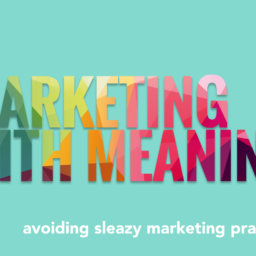The Psychology Behind Color in Marketing
Building a content marketing campaign can be difficult if you don’t know where to start. You may have an initial idea, but bringing it to life and getting your message seen is always easier said than done. Whether you want to inform, educate or excite your audience you’ll always want your content to resonate with your audience. One way to do this is by using colors in your marketing strategy to drive audiences to react and engage with your content. Psychologists believe that color is tied to emotion and may denote particular feelings or actions. It’s important for brands to embrace these emotional cues and use them in harmony with their marketing.
Here we’ll breakdown how using color can help your business; from branding and identity, to attracting users who visit your website, and persuading them to turn into customers, all because of color!
Branding & Color
Each business/brand has their own unique identity, one that showcases their personality and product offering. Many large brands are recognized immediately by their color and style. Color plays such a huge part in branding, it’s essential to include color theory when developing your overall brand identity.
Take Coca Cola as an example, it’s certainly no coincidence that red is the brand’s color. Red is a supreme color that’s considered to be full of energy, strength, passion and power.
Color & Site Usability
Color is one of the most powerful forms of non-verbal communication. Designers and marketers use color as it offers an immediate way to convey meaning and message. This needs to be apparent throughout all of your branding, not just the logo. While it’s important to use colorways and styling in everything you do, it’s also important to use color appropriately. Take time to understand the meaning behind particular colors and use them in the right place at the right time, it’s also important to use variations in style and color when appropriate.
For example, your use of color on your website needs to be adaptable for good readability and usability. Striking a good balance with contrast can also help you to highlight important messages or deals. Well proportioned contrasts can help reduce eye strain and therefore make users more comfortable, if you want to encourage a user to undertake a specific action, you can use color and contrast to do so.
Keep in mind a user’s online experience should be smooth, so use fonts that make your site as easy to read as possible. Dark text on a light background is the most widely used as it’s the most legible, so while you may be tempted to use a more artistic font, your users may be turned off by this and subsequently click off the site.
Color & Persuasion
Color theory is a complex topic, though there are many ideas about what color means, research actually shows that personal preference, cultural differences, context and previous experiences all play a part in how we individually see color. While trying to influence people into thinking the same thing about a particular color is a minefield, there’s still plenty to take into consideration. The key with using color in your online efforts is to make it practical. The use of color in your other strands of marketing can indeed be more playful and nod towards the different perceptions that color theory brings to the table.
Color appropriateness is another consideration, for example, Harley Davidson is unlikely to brand itself up in this season’s on trend millennial pink, because it’s not appropriate for the ‘rugged’ and ‘manly’ exterior it has built up. Generally certain colors are synonymous with particular emotions and therefore, if used correctly, color can help create strong emotive content.
Join our newsletter to find out what each color means and how it can help you distinguish your brand! For assistance creating a marketing strategy that promotes growth and drives business, contact us at DMA Solutions!















